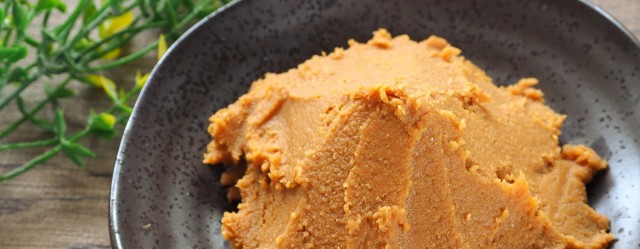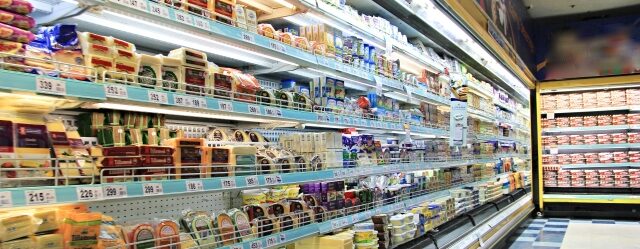
On March 31, 2022, the Ministry of Agriculture, Forestry and Fisheries (MAFF) newly established Japanese Agricultural Standard (JAS) for “Miso”. We would like to touch on its contents this time.
Perhaps surprisingly, there was no JAS for Miso until this establishment. The reason for this is that there is a variety of Miso in Japan, and it was difficult to standardize the quality of the various types of Miso. (The new JAS does not include compositional standards, but production methods of Miso) When looking at overseas markets, exports of Miso have been on an upward trend because of the spread of Japanese food culture and also Miso is listed as a priority export item in Japan. On the other hand, not much is known about what Miso is in the overseas market, considering the fact that foreign products imitating Miso are sold alongside Japanese Miso, and some Chinese soybean sauce and Korean Doenjang products are labeled as “みそ(EN: Miso)” or “Miso”, which can be confused with Japanese Miso. Under these circumstances, in order to strengthen the competitiveness of Japanese Miso in overseas markets, JAS for Miso was established to specify the traditional production methods.
Regarding the definition
Under Food Labeling Standards, Miso has been able to be sold with the name “Miso” if it satisfies the following definitions.
Those listed below in a semi-solid state :
- The one mixed either the following with salt and then fermented and matured
-Steamed soybeans or steamed soybeans and grains such as rice, wheat, etc., added with steamed grains such as rice, wheat, etc., cultured with Koji mould
-Soybeans steamed and cultured with Koji mould or to which steamed grains such as rice, wheat, etc. are added- Foods to which sugar (meaning sugar, molasses, and sugars), flavor ingredients (meaning dried bonito, dried fish, powdered or extract concentrates of kelp, etc., fish soy sauce, hydrolyzed protein, yeast extract, and other similar foodstuffs. The same applies in Paragraph for Miso in Appended Table 4), etc. are added
* Followed by “Rice Miso”, “Barley Miso”, “Soybean Miso”, and “Mixed Miso”.
As for the definition of Miso in the JAS, a supplementary note has been added to “semi-solid state” as “something that does not flow and collapse when served on a plate.”, which is consistent with Food Labeling Standards. Therefore, when the product is sold as “Miso” based on the definition of Food Labeling Standards, the product is considered to be able to be certified as JAS by satisfying the requirements stated below.
On the other hand, other than the definition of Miso itself, a more detailed definition has been provided for the so-called “Koji”, since it is a basis of the traditional Miso production process in Japan. Koji is obtained from rice, barley or other grains steamed and added with cultured Koji mould, or soybeans steamed and added with cultured Koji mould.” This definition will be related to the requirements described below.
Seed Koji(Koji starter)
“This type is added for the purpose of supplying Koji mould when producing Koji, and it is produced with either of the processes as below:
-Dry with rice etc. on which spores(conidiospores) are epiphytic that are generated with inoculating and culturing Kouji mould into/on the rice etc.
-Separate only the spores mentioned above by sieving
*1 In general, the former is called “Granular Seed Koji” and the latter “Powdered Seed Koji.
*2 Excipients such as starch may be mixed in Seed Koji.Koji
Grains such as rice and barley, soybeans, or their by-products [bran, rice bran, etc.] on which microorganisms are propagated.
Bara(loose) Koji
Among Koji, the one obtained by adding Seed Koji to steamed grains such as rice, and barley and cultivating Koji mould, which retains its original granular form
Rice Koji
Among Bara Koji, the one obtained by adding Seed Koji to steamed rice and cultivating Koji mould.
Barley Koji
Among Bara Koji, the one obtained by adding Seed Koji to steamed barley or hulless barley and cultivating Koji mould
Soybean Koji
Among Koji, the one obtained by adding Seed Koji to steamed soybeans and cultivating Koji mould
*There are two types of Koji: those that retain their original granular form (Soybean Bara Koji) and those that are crushed into a ball-like mass (Miso Tama Koji).
Requirements for standard labeling
The requirements of JAS for Miso are as follows.
Koji mould to be used
Koji mould used in the production of Miso shall be Aspergillus oryzae.
Koji
Koji used for the production of Miso shall be Bara Koji or Soybean Koji.
Management of seed Koji and production of Miso during the process
1 Management of seed Koji
Seed Koji must be managed properly not to mix with any other Koji cultures than Aspergillus oryzae from the time when management for the accepted Seed Koji is initiated until it is used in the production of Miso.
2 Management of Miso during the production process
Miso during the production process must be managed properly so that it is not mixed with the one cultured with Koji moulds other than Aspergillus oryzae or any other fermented products with them.
Production methods
Miso must be produced to conform to its definition.
Aspergillus oryzae, Aspergillus sojae, Aspergillus tamarii, and other Koji moulds are used to produce Miso. The JAS requires to choose only one of these types and to manage not to mix with other Koji moulds.
The above is a brief overview of JAS for Miso. The objective of strengthening competitiveness in overseas markets is behind it, so if you are considering exporting Miso, it would be worthwhile to apply for the Standards. We hope you find this information useful.
References
- JAS for Miso (MAFF)
- Appended Table 3 of Food Labeling Standards (Consumer Affairs Agency) (Definition of Miso)
- 2019 Export record of Agricultural, Forestry and Fishery Products and Foods (by Product) (MAFF)
Newsletter Signup
We issue monthly e-newsletters, which provide you with the latest updates on food labeling/regulations in Japan.
If you want to make sure to not miss any issue, please click below.
Related Service
Research Services on Ingredients & Food Labeling -For the Japanese Market-
We verify the conformity of ingredients and additives with the standards for use in Japan based on specifications such as formulation lists. We also verify the conformity of the proposed labeling of ingredient names, nutrients, etc. with the labeling standards based on specifications such as formulation lists.

Label bank Co., Ltd. Regulatory Review and Development
Born in Japan. Specializing in biochemistry, he is engaged in research work on ingredients and additives imported to Japan from overseas, and provides consulting services on food standards, additives, and food labeling.


